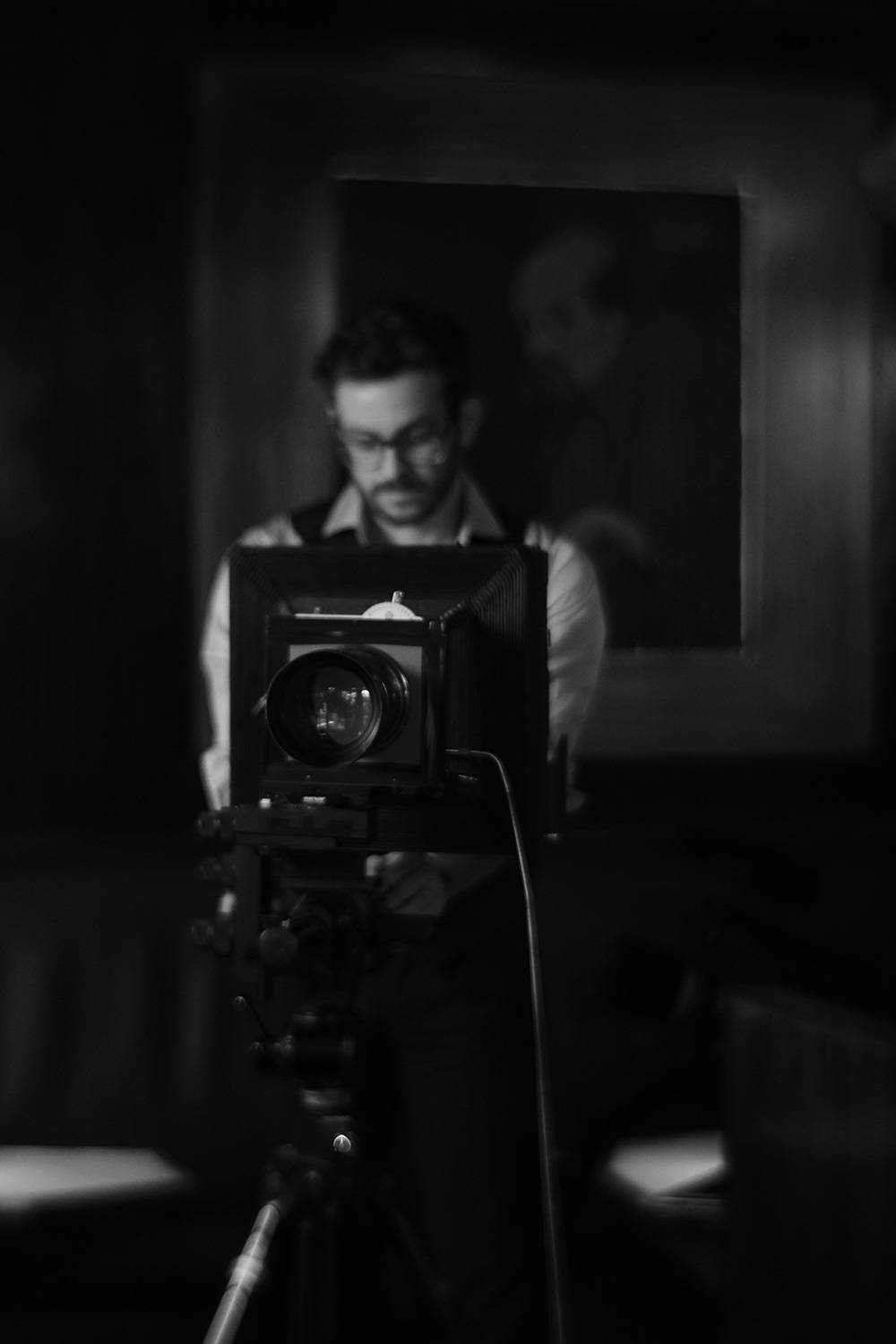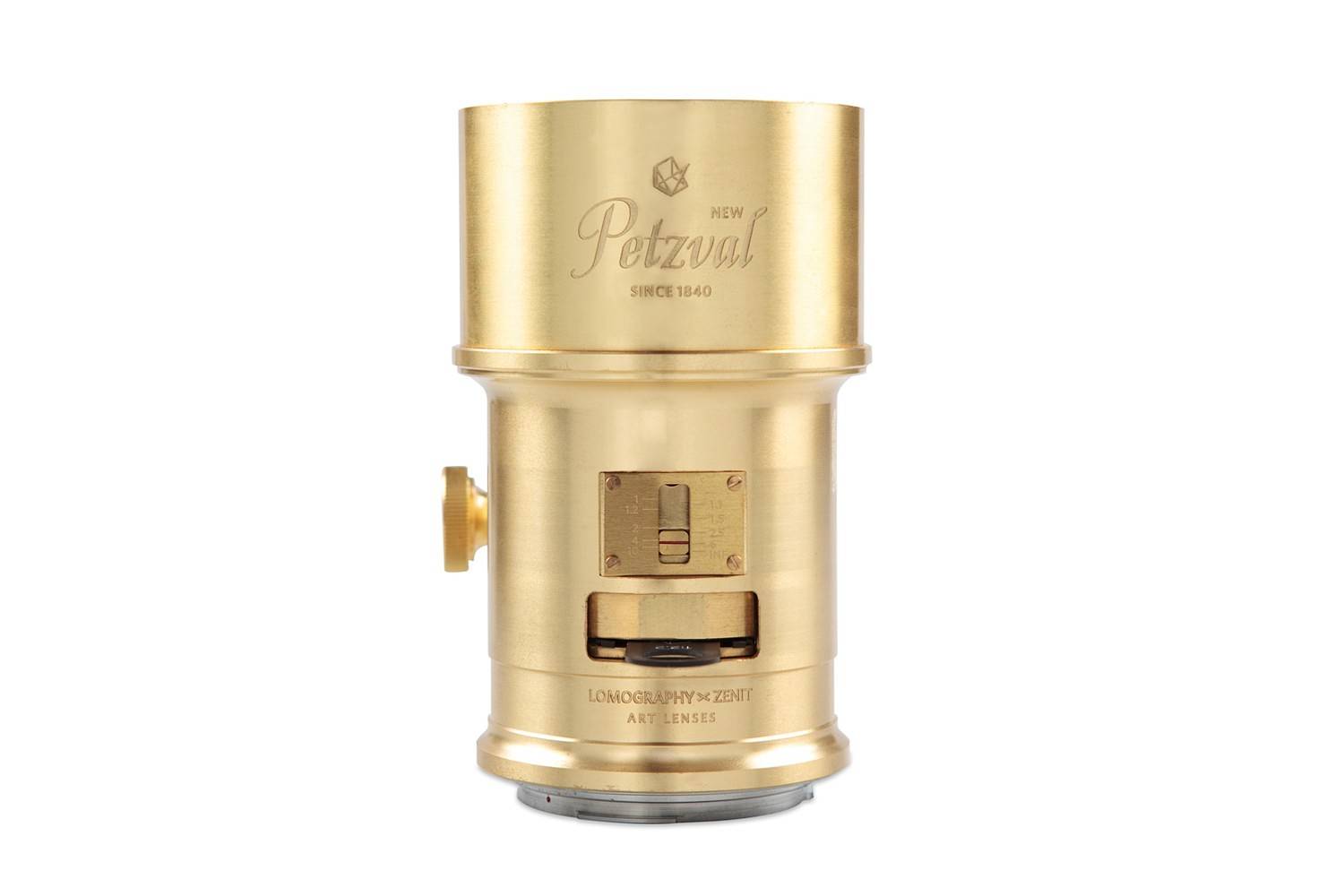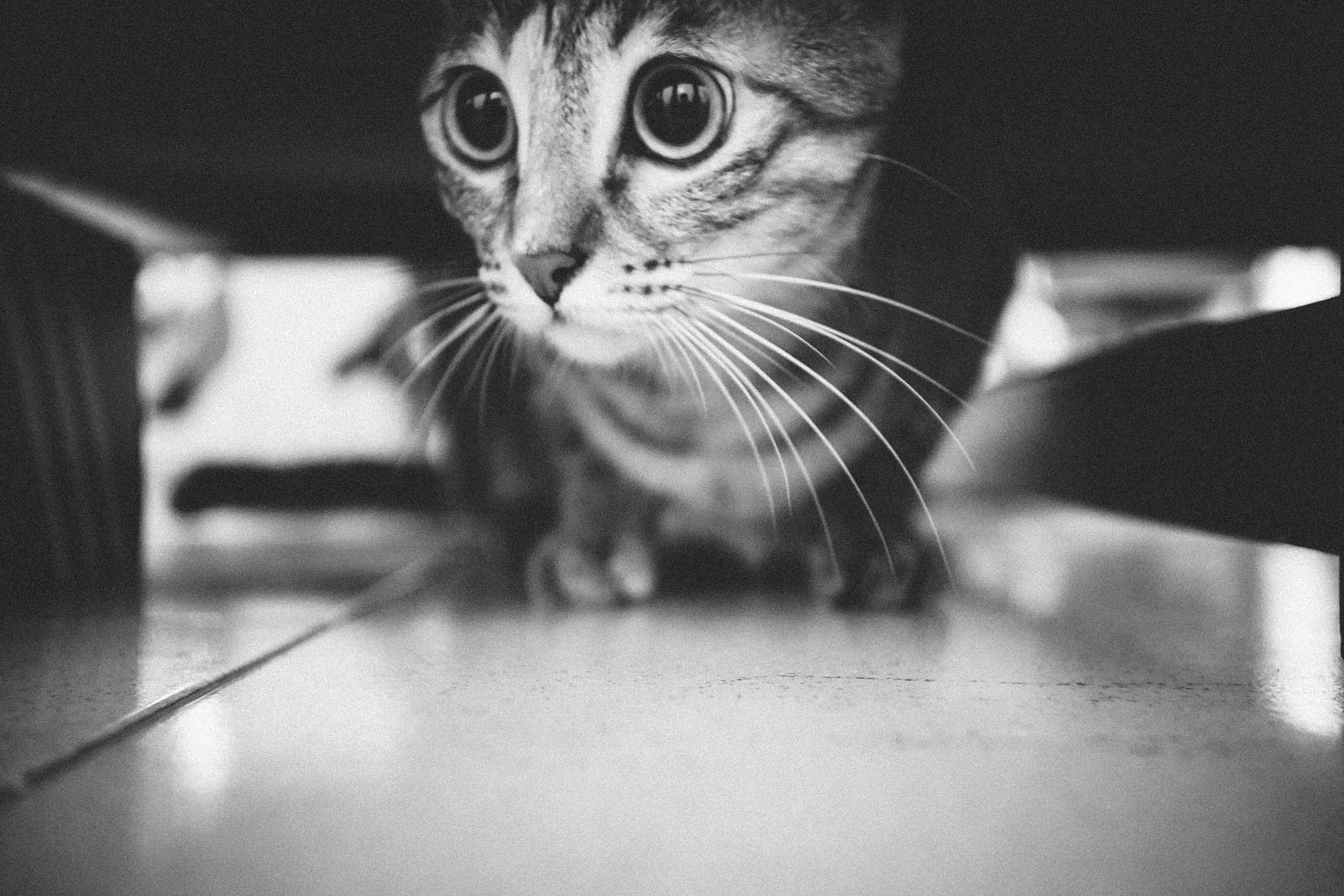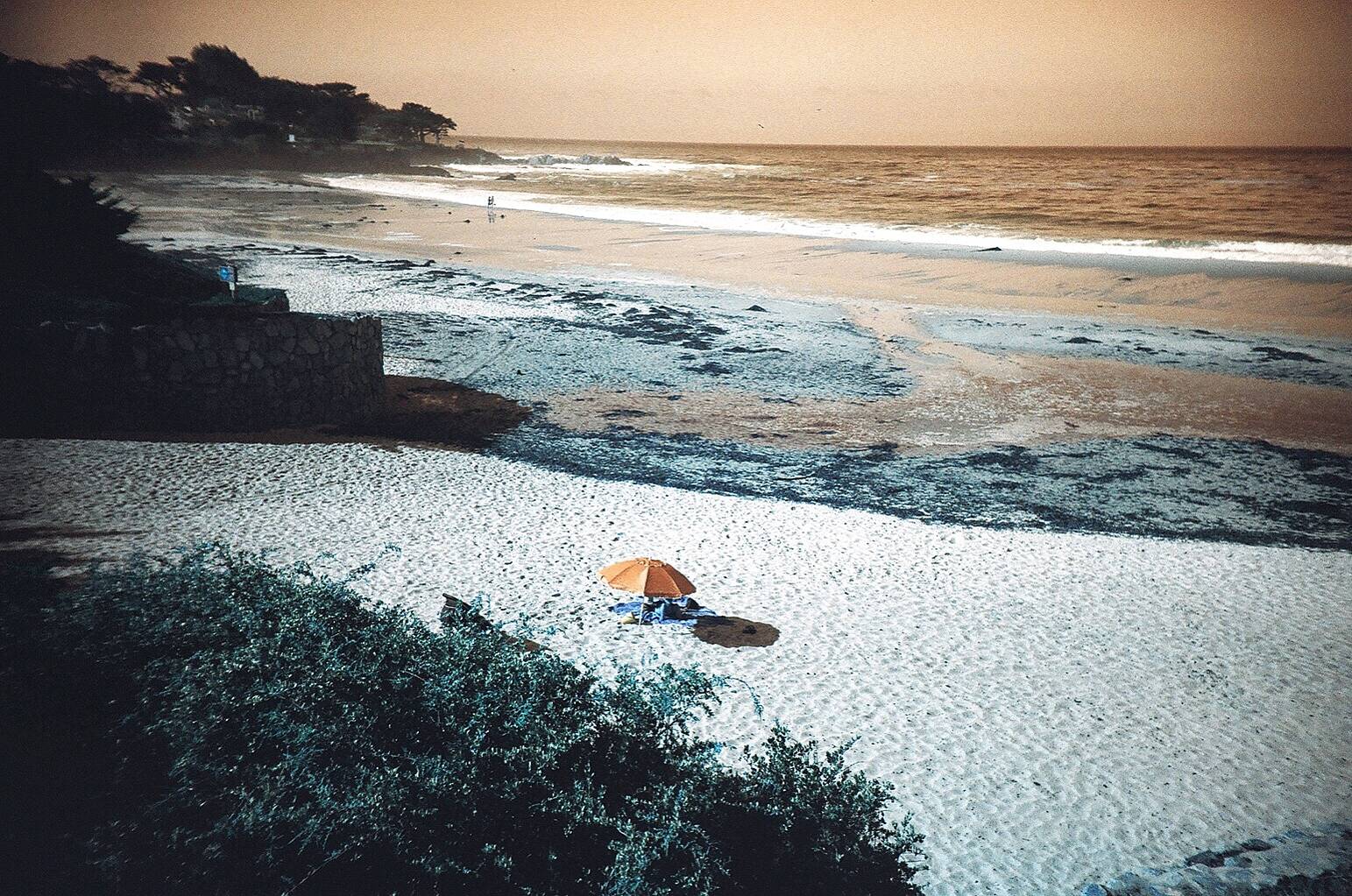Origin Stories of the Lomography Art Lenses
2 Share TweetDo you want to know more about Lomography's historically-inspired Art Lens series? Peruse through our extensive piece on each of our art lenses' histories and origin stories -- from their predecessors to their contemporary reinventions.
New Petzval 85
The Lomography New Petzval 85 art lens is reminiscent of the original Petzval lens invented by Joseph Petzval in 1840. Petzval took the challenge to improve the Chevalier lens model which was used for Louis Daguerre's "daguerreotype" camera, hoping to improve the sharpness and speed of his own lens which the Chevalier failed to do so.

Petzval committed to strenuous research and experiments of possible designs for half a year until Petzval chose to use a double achromatic objective lens which had four lenses in three groups. The lens didn't give any distortion, focal length of 160mm, with an aperture of f/3.6 and a stop and a half faster than Chevalier's other lens, the Photographe à Verres Combinés. Petzval, in the end, won the race to make the perfect lens for the daguerreotype.
Firstly conceived in Vienna, Austria, 1840, the Petzval became the first fast photographic lens and flourished portrait photography and much of 19th-century photography.

In July 2013, Lomography revived the Petzval invention, called the Petzval 85 through the Kickstarter campaign (which was successfully funded within the same day), earning more than one million US dollars from an estimate of 3,300 backers. The campaign is considered as one of the most successful design projects in Kickstarter.
Lomography's Petzval 85 took the characteristics of the original Petzval lens -- the sharpness, crispness, vignettes, narrow depth of field -- with improved bokeh and swirly effect. The New Petzval 85 Lens was manufactured in Russia by Zenit, featuring glass optics and compatible mounts with Canon EF and Nikon F for analogue and digital cameras, available in golden brass and minimalist black.
View more photographs done by this product through the New Petzval 85's community tag.
Compatible mounts: direct compatibility with Canon EF, Nikon F for both analogue and digital cameras, Fuji-X mount through Lomography adapter
Visit the Kickstarter page of the New Petzval 85 Lens. For more technical information, visit the microsite of the New Petzval 85.
Further reading:
Incredible Works on the Petzval Lens by Emily Soto
Another Petzval Series with Talented Photographer Emily Soto
Swirling in Bokeh: Ines Rehberger Tests the New Petzval Art Lens
New Russar+
The New Russar+ lens is Lomography's reinvention of the original 1958 Russar MR-2, which was then a ground-breaking super-wide-angle lens.

Before everything else, the original lens was made by Mikhail Mikhailovich Rusinov, who was then Chief Optical Engineer at Zenit and a talented composer and piano player. He compared musical composition to the fabrication of optical systems, saying that optical systems were created the same way as musical compositions are created from notes. Hence, he designed the Russar in 1935, changing wide-angle photography forever.
The state of wide-angle lenses before the Russar was the poor illumination on the edges of the photos. With Rusinov's Russar, he was able to double the illumination. Unfortunately, he was not able to patent his optical design until 1946 due to World War II.
The Zenit Russar MR-2 that was launched in 1958 was a perfected version of Rusinov's optical scheme and was a given ode to the optical technician. The "MR" in the Russar stood for Rusinov's initials. The Russar MR-2 was perfect for revolutionizing street, landscape, and architectural photography.
In April 2014, Lomography made its own variety of the Russar+, named the New Russar+. Designed by Lomography and manufactured in Russia by Zenit, the brass-bodied and chrome plated super wide-angled lens gave the Russar an update with the first-ever 20mm in screw mount. Lomography's version also modified the lens tube construction, making it compatible with all L39/M mount analogue cameras, digital mirrorless cameras and other cameras using adapter mounts.
View more photographs done by this product through the New Russar+'s community tag.
Compatible mounts: L39 mount and M mount for analogue cameras, digital mirrorless cameras
For more technical information, visit the microsite of the New Russar+.
Further reading:
Through New York City with Markus Hartel and the New Russar+
The World at a Standstill: Journalist Mindy Tan and the Russar+ Art Lens
Lomo LC-A Minitar-1
The birth of the Lomo LC-A Minitar-1 roots from the very heart of the original LOMO LC-A. Born in St. Petersburg, Russia, the LC-A was born -- but the very core of this iconic camera comes from experts of the LOMO PLC. The name Minitar-1 came from an optic specialist at the GOI Institute in Russia, Mr. Tarabukin. The "-tar" at the Minitar-1 comes from the three letters of his last name.
The Minitar-1 was specifically modeled for the LC-A, but the problem was it could not be mass-produced in a cost-effective manner, hence problems arose. Thanks to respected emeritus Lev Sakin, he took the reins from Mr. Tarabukin and recalculated the production of the Minitar-1 for the LOMO LC-A. Both the Minitar-1 lens and the camera went into mass production by 1984.
The lens became known for its vignettes and vivid colors, which would then be responsible for the Lomographic aesthetic, with the companion of the LC-A.

In May 2015, Lomography picked up to reinvent another historical lens into reproduction, borrowing the same formula from Tarabukin and Sakin into a modernized, 21st-century lens that everyone can enjoy -- whether with old or new, analogue or digital cameras.
View more photographs done by this product through the Lomo LC-A Minitar-1's community tag.
Compatible mounts: directly compatible to Leica M mounts, and can be compatible with Sony E mount, Fujifilm X mount, and Micro 4/3 mount through Lomography adapter mounts
For more technical information, visit the microsite of the Lomo LC-A Minitar-1.
Further reading:
From Experimental to Ordinary: LomoAmigo Martin Dietrich Tests the Minitar-1 Art Lens
Petzval 58 Bokeh Control

In late May of 2015, Lomography remastered the Petzval lens once again, namely Petzval 58 Bokeh Control art lens. Following up their reinvention with the Petzval 85, Lomography decided to upgrade its focal length to 58mm, allowing a more standard focal length for versatile photography; fitting for landscapes, architecture, street, portraiture, fashion, documentary and pretty much everything else. However, the biggest upgrade was that the new lens allowed the user to adjust the bokeh effects through the "bokeh control ring". The ring allows the user to control the bokeh effects within any environment or lighting conditions.
The lens was funded through another Kickstarter campaign from Lomography. It was successfully funded for only three hours since its launch. It received a total of almost one million US dollars from more than 1,800 backers.
View more photographs done by this product through the Petzval 58 Bokeh Control's community tag.
Compatible mounts: direct compatibility with Canon EF, Nikon F for both analogue and digital cameras, Fuji-X mount through Lomography adapter
Visit the Kickstarter page of the Petzval 58 Bokeh Control. For more technical information, visit the microsite of the Petzval 58 Bokeh Control.
Further reading:
First Impressions of the Petzval 58 Bokeh Control Lens by Fashion Photographer Issa Ng
First Impressions of the New Petzval 58 Bokeh Control Art Lens: Matthieu Soudet (NSFW)
New Jupiter 3+

The New Jupiter 3+ is one of the latest remakes of a historical lens, the Russian Jupiter 3. The original 1940s Jupiter 3 was a direct copy of the Zeiss Sonnar, a lens that was one of the beloved lenses since it had the largest aperture of any lens designed during its time.
Because of such reputation of the Sonnar, the Soviet-Russian factory Zenit began to develop its own copy, sing the German Schott glass. Its first name was Zeiss Sonnar Krasnogorskij, before being rebranded as Jupiter 3. The Jupiter 3 was meant for the Contax/Kiev bayonet mount and later on the Leica thread mount. When the German glass supply ran out in 1955, the production of the Jupiter moved to the ZOMZ factory, where they use Russian glass. The Russian glass had a unique quality that made the Jupiter lens more interesting than it already was. For the remaining years of production from 1975 to 1988, the Jupiter was manufactured in the Valdai factory in Central Russia.
The original Jupiter 3 lens is one of the most sought-out lens and one of the most difficult ones to find. In most cases, the Jupiter lens would almost always suffer damage beyond repair. However, after almost 20 years, the Jupiter would resurrect from the dead by Lomography. In January 2016, the New Jupiter 3+ would relive its legacy.
The New Jupiter 3+ improved the original lens with its modified 0.7m closest focusing distance, multi-coat to reduce flare, ghosting and surface reflection was sturdier than the original lens. the New Jupiter 3+ was made out of aluminum and was compatible with rangefinder cameras thanks to its Leica M rangefinder focus. The lens would also work with mirrorless digital cameras through adapters. The new version just heightened and improved the qualities the original was known for: sharp, crisp, natural colors and balanced spherical aberration fitting for all sorts of photography.
View more photographs done by this product through the New Jupiter 3+'s community tag.
Compatible mounts: direct compatibility with L39 and M mounts, and others through Lomography adapter
For more technical information, visit the microsite of the New Jupiter 3+.
Further reading:
LomoAmigo Hamish Gill on Shooting with the Jupiter 3+ Lens
First Impressions of the New Jupiter 3+ Art Lens: Devin Blaskovich
LomoAmigo Simeon Smith Shoots with the Jupiter 3+ Art Lens
Daguerreotype Achromat 2.9/64
Lomography's Daguerreotype Achromat 2.9/64 is one of the latest art lens, inspired by the very first photographic lens in the world, built by Charles Chevalier for photography pioneers Nicéphore Niépce and Louis Daguerre's daguerreotype. The daguerreotype was the 19th-century invention that perfected the camera obscura by shortening exposure time than the usual. It was thanks to Chevalier's achromatic design on the lens, which made it a successful photographic process. Daguerre's invention continues to be one of the most popular yet antique processes in the modern world.

Results of a daguerrean process consists of soft vignettes and almost painterly-like crispness that became very much popular for people who would want their portraits taken.
It's why in April 2016, Lomography decided to create an art lens that would mimic the daguerrean aesthetics, the Daguerreotype Achromat 2.9/64. The lens came to fruition after its successful Kickstarter campaign that got funded within the same day since its launch, earning an overall of USD 900,000 from 2,000 backers.
The Achromat was designed in a small manufactory at the banks of Yangtse River in Central China, the same place where the LC-A range is being produced.
The art lens gives a contemporary tribute to Chevalier's achromat lens, not only providing the soft, glowing yet crisp qualities, bit as well as its variety of classic Waterhouse Aperture plates. It also has the Lumière Aperture plates, perfect for radiant and soft glow photography as well as the Aquarelle Aperture plates, meant for textured , painterly effect in which the antique daguerreotype is famous for.
Being so versatile, the lens is one of the spearheads of reinventing a vintage aesthetic into 21st-century technology. Like most of Lomography's Art Lens series, the lens is compatible with digital and analogue cameras through mounts and adapters.
View more photographs done by this product through the Daguerreotype Achromat 2.9/64's community tag.
Compatible mounts: Canon EF, Nikon F or Pentax K SLR mounts and others through Lomography adapter
Visit the Kickstarter page of the Daguerreotype Achromat 2.9/64. For more technical information, visit the microsite of the Daguerreotype Achromat 2.9/64.
Further reading:
Emily Soto's Enigmatic and Romantic Portraiture with the Daguerreotype Achromat 2.9/64 Art Lens
First Impressions of the Daguerreotype Achromat 2.9/64 Art Lens: Anna Rakhvalova
First Impressions of the Daguerreotype Achromat 2.9/64 Art Lens: Rémy Perthuisot
For more comprehensive details about our Art Lens series, visit our Lomography Art Lenses channel.
written by Ciel Hernandez on 2017-02-07 #gear #culture #videos #new-russar #lomography-art-lenses #lomo-lc-a-minitar-1 #petzval-58-bokeh-control #petzval-85 #new-jupiter-3 #daguerreotype-achromat









































No Comments